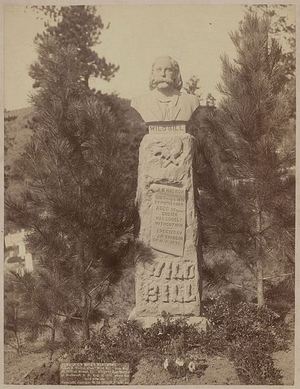Professional Ethics
Moral confusion is everywhere. Wisdom seems illusive and words escape us. If ever there were a subject in which we dare not be “functionally illiterate,” it must surely be ethics. For many, ethics is a matter of “what I am comfortable with and such individuals feel that ethics, like everything else, is about choices. This type of thinking is what leads to deciding what counts for us must be honored by others. An example of this would be Hitler. Hitler was comfortable with what he practiced and believed that he felt it must be honored by others. In today’s modern world, there is no particular Hitler but there are good Samaritans, acts of vigilantism, acts of civil disobedience, and acts committed by professionals in violation of the ethical standards of his/her profession.
Good Samaritans
Good Samaritan laws in the United States are laws protecting those from blame by choosing to aid others who are injured or ill. This law is intended to reduce bystander’s hesitation to assist, for fear of being prosecuted for unintentional injury or wrongful death of those they aid.
When Jane Turi, a registered nurse, attended her daughter’s field trip to the beach she could have never imagined by the end of the day she would be considered a hero due to her act of Good Samaritan status. Anthony Farago had eaten a snack that contained peanuts and immediately suffered an extreme allergic reaction. Mrs. Turi heard screams for help and when she realized what the problem was she got the EpiPen from the teacher’s emergency kit and gave Anthony the shot to slow down his allergic reaction. He was then taken to the hospital and was released with no further problems. Mrs. Turi was later located by Anthony’s mother and thanked for being a Good Samaritan. It is acts such as this one that proves that by helping others who are need you can end up saving lives. (Good Samaritan saves boy’s life, 2004)
In another case, a Good Samaritan paid a British woman’s tax bill that totaled $94.72 to get her out of jail. He remained anonymous. The woman later was heard on a local radio station stating negative comments about the male for bailing her out stating that she thought he had malicious motives for bailing her out. When the male found out about this he asked the courts for his money back. He was refused. This case is a good example as to the fear that individuals have when someone does something good or helpful for them. In this case it was obvious that the male had no malicious motives because throughout the entire ordeal he remained anonymous. (Pensioner’s Good Samaritan wants cash back, 2005)
In a final case of Good Samaritan status, a male was shot after stopping to help a woman who had been screaming that someone was following her and trying to kill her. The Good Samaritan from San Jose, California stopped his van on the way to work and the screaming woman jumped into his van. She had escaped after being held captive by the person trying to kill her. While trying to drive away the male who was trying to kill the woman pulled up to the van and shot several rounds into the van, hitting the Good Samaritan in the arm and killing the woman. It was discovered later that the male shooter had killed himself. This is a good example as to why the Good Samaritan Law was put into affect. The male did not hesitate to stop and help the woman probably knowing that by helping her he would not be in any harm. (Good Samaritan shot after stopping to help woman, 2001)
While committing a Good Samaritan Act individuals need to realize that they will not be help responsible as long as they did their best to try to help in the situation. It can be extremely frustrating and upsetting to hear about individuals who just continue to walk by someone who needs help when all they have to do is stop and help. I do believe that all jurisdictions should have a Good Samaritan law established and put into place. I believe that the law Bill Clinton passed while he was President was extremely important. I believe individuals have to be accountable and in order to have a better functioning society we need to help each other out when in need. I have done some Good Samaritan acts, everything from assisting a stranded motorist who was stuck on the side of the road, to helping a male who had a seizure while waiting for the subway in New York. I have never purposely failed to help someone when they have been I need of assistance. I feel as though my morals and values are strong and I am firm believer in helping out others in need. I believe that good Karma comes around to those who do good deeds.
Criminal Acts by Professionals
Catherine Peay, a former honors English teacher at Sligo Middle School in Silver Spring pleaded guilty to child abuse and a second degree sex offense in November of 2000. The boy, Carlos Andres Perez, told police he and his teacher had been naked and kissing in the park. The woman later admitted that she and Carlos had intercourse several times, according to police charging documents. Peay told police that she did not believe she was abusing a minor, that she was actually vulnerable to the boy’s compliments during a stressful time in her life. The Judge responded that her conduct “reflects poorly on a noble profession” and that it was “devious, immature and irresponsible.”
The teacher was charged with rape, among other counts. She pleaded guilty to child abuse and second-degree sex offense, and served three years behind bars. Carlos died in 2001 after failing to take medication for seizures. His mother says she believes he committed suicide.
A former bank loan administrator faces felony fraud charges over what authorities say were $94,000 in loans she secured for herself without offering proper collateral. Beth A. VanOsdol, 56, took out the loans between 2001 and May 2005, when she was fired from her job as a loan review administrator and credit compliance officer at MarkleBank, police said. Court documents indicated that VanOsdol used several vehicles – a 1999 BMW, a 2002 Land Rover, and a 1997 Honda – or certificates of deposit as collateral for the loans but never gave the bank proper documents. On some of the loans, a vehicle had been listed as collateral but then crossed out, according to a police report.
Revelations of sexual abuse by Catholic priests exploded into public consciousness in January 2002, when the Boston Globe reported allegations that Rev. John J. Geoghan fondled or raped more than 130 children over three decades in a dozen Boston parishes.
For three decades, Geoghan preyed on young boys in a half-dozen parishes in the Boston area while church leaders looked the other way. Despite his disturbing pattern of abusive behavior, Geoghan was transferred from parish to parish for years before the church finally defrocked him in 1998 (Boston Globe).
In the Geoghan case alone, some 150 people eventually came forward, claiming they were fondled or raped by the priest. In February 2002, Geoghan was sentenced to nine to 10 years in state prison for molesting a 10-year-old boy at a pool in Waltham. Later, the Boston Archdiocese reached a $10 million settlement with 86 other alleged victims. More than a dozen civil suits are still pending (Boston Globe).
Civil Disobedience
Civil disobedience encompasses the active refusal to obey certain laws; demands and commands of a government or of an occupying power without resorting to physical violence. Civil disobedience has been used in nonviolent resistance movements in India in the fight against British colonialism, South Africa in the fight against apartheid, in the American Civil Rights Movement in the fight against segregation and disfranchisement, and Europe as well as in the Scandinavian resistance against Nazi occupation.
Civil disobedience, as opposed to demonstrating, is the purposeful violation of a law to communicate the protester’s belief that the law is unconstitutional or morally defective. Although some people think that violent action can constitute civil disobedience, the tradition of civil disobedience in this country is non-violent. Civil disobedience is used in many different arenas and for many different reasons. The usual goal of civil disobedience is to create public support and pressure to force a change in the law in question. Although civil disobedience has a long history in the United States, from the Boston Tea Party to some of the most important moments of the civil rights movement, there is no constitutional right to engage in civil disobedience.
Therefore, a person who engages in civil disobedience must expect to be exposed to the maximum penalties of the law, which may include a fine and imprisonment. If the law under which the person is charged is subsequently proven to be unconstitutional, however, the disobedient will be acquitted. On the other hand, if the purpose is to highlight the immorality of an otherwise valid law, rather than its unconstitutionality, the individual must expect to be prosecuted to be fullest extent of the law’s penalties.
I really think that some laws have been changed when disobedience has been a factor. Curfew laws for example have been changed because people in the community have asked the police to issue such a rule that effects certain age groups for example, in Illinois the curfew law is as follows: For any person between the ages of sixteen (16) years and eighteen (18) years, between the hours of 11:00 p.m. and 6:00 a.m. on Sunday through Thursday nights and between the hours of 12:00 midnight and 6:00 a.m. on Friday and Saturday nights, and 2. For any person aged fifteen (15) years and younger, between the hours of 10:00 p.m. and 6:00 a.m. on any day, unless accompanied by and in the custody and control of his/her legal parent or legal guardian, or the spouse of such parent or guardian, or a relative over the age of twenty-one (21), or unless in some occupation or business in which such person may lawfully engage under the statutes of this state. (Ordinance 96.154, l2.l0.96)
Vigilantism-Here to Stay
Vigilantism has vaguely been described as an action that is to correct an action believed to be improperly handled or rules not effectively enforced. If this is the case then as long as there are laws or rules and people to disobey then there will never be enough law enforcement to negate the need for vigilantes. According to O’Connor; North Carolina Wesleyan College professor, there are two styles of vigilantes; the lone wolf and the instigator. (2004). The lone wolf and the instigator have similar desires of rectifying what they think is wrong but their differences lie in how many come to aid.
Michael Mullen, killed two sex offenders, is the perfect replica of the lone wolf. Mullen acted alone in his killings, he was easy to find, and he sought recognition for his deed as well as he wants his life to end quickly. The instigator is best represented by the Minuteman Project that Gilchrist founded. Gilchrist is the typical type of vigilante; one who gets others to participate and is highly organized. O’Connor states that the media portrays the lone wolf more in the news; giving the impression that the lone wolf is more common but in reality it is the instigator that is more common. (2004).
As for deciding if vigilantism should be allowed; the above information leads one to believe that whether it is allowed or not it will always be a part of society. With that being said, it may behoove many to allow certain types of vigilantism. For instance, neighborhood watch programs can be considered vigilantes since they watch for others and report to the police when something seems wrong. Neighborhood watches are allowed as long as no one attempts to harm themselves or others in the process of catching the suspect. Should vigilantes like the lone wolf Michael Mullen be allowed? No! Vigilantes like Mullen are taking the full justice system upon their shoulders and acting out from personal feelings rather than what our legal system focuses on; the facts and the possibility of change.
When asked what circumstance would I violate a law to enforce the law; I think it would have to be a situation where someone I love is being harmed the one who did it got away. An example may include breaking and entering into someone’s home who I suspect is a rapist or murderer of one of my friends or family in search of evidence. If under the right situation I might even kidnap or hold hostage who I thought “knew” was the culprit in exchange freedom for his or her confession. It really is hard to say to what extent one would go to seek what they felt was justice. In reality, I can only hope that our system does the best it can to seek justice and I will have faith that the right thing was done by neutral parties instead of through my biased eyes.
Conclusion
As we have observed with the many different scenarios, ethics plays an important role in many aspects of our lives. As a Good Samaritan, an individual must follow their ethical values when it comes to deciding whether or not to help out another individual. We would hope that all individuals have good ethics in this area, but unfortunately there are still those who refuse to help. When looking at examples of Criminal Acts committed by Professionals we are again faced with ethical decisions that individuals need to make while performing their professional responsibilities. We again realize that not everyone has good ethics in this area of their lives as shown in the examples above. Civil disobedience focuses not on individuals but society as a whole. If an entire society fails to have good ethics we are faced with civil unrest and complete ciaos. Finally, we observed individuals who committed acts of Vigilantism. Individuals follow the ethics they believe in to carry out acts that should be handled by law enforcement. By doing so they cause harm to individuals that should have been given the chance to go in front of the Justice system to plead their cases. Ethics is an important aspect of everyone’s lives and our society will continue to battle certain situations due to the wide variety of ethical values that each of us have.
References
(n.d.). Retrieved Feb. 25, 2006, from http://www.animal-law.org/library/pamphlet.htm
(n.d.). Retrieved Feb. 25, 2006, from http://www.bolingbrook.com/index.php?page_id=34
Davison, Robert, Kock, Ned. Professional Ethics. Retrieved February 23, 2006, from:
http://www.is.cityu.edu.hk/research/resources/isworld/ethics/index.htm
Ex-bank officer faces loan fraud charge. (2006). Retrieved on February 24, 2006 from: http://www.fortwayne.com/mld/newssentinel/news/local/13942640.htm
Francione, G. (n.d.). Demonstrating and civil disobedience:. from http://www.animal-law.org/library/pamphlet.htm Web site: .from http://www.animalaw.org/library/pamphlet.htm
Good Samaritan saves boy’s life. (2004). Retrieved Feb. 17, 2006, from http://www.cbsnews.com/stories/2004/06/29/earlyshow/health/main626561.shtml.
Good Samaritan shot after stopping to help woman. (2001). Retrieved Feb. 20, 2006, from http://www.sfgate.com/cgi-bin/article.cgi?file=/news/archive/2001/01/10/state2110EST0272.DTL.
O’Connor, Tom. (2004). Vigilantism, Vigilante Justice, and Victim Self
Help. Retrieved on February 20, 2006, from the North Carolina Wesleyan College at http://faculty.ncwc.edu/toconnor/300/300lect10.htm
Pensioner’s Good Samaritan wants cash back. (2005). Retrieved Feb. 18, 2006, from http://news.webindia123.com/news/showdetails.asp?id=124843&cat;=World.
Retrieved February 24, 2006 from: http://www.boston.com/globe/spotlight/abuse/geoghan/
Shaver, Katherin. (2001). Fired MD Teacher Gets 5 Years for Sex with Boy. Washington Post. Retrieved February 20, 2006, from: http://www/fact.on.ca/news/news0101/wp010126.htm




